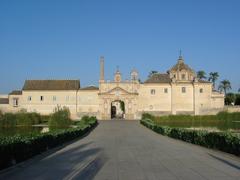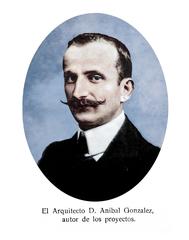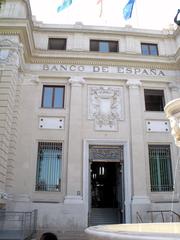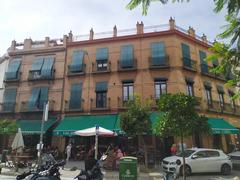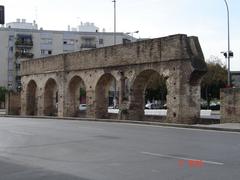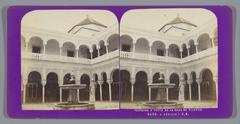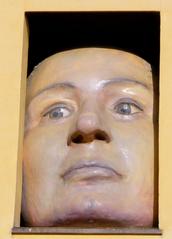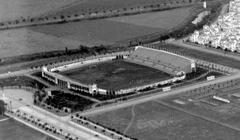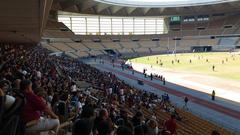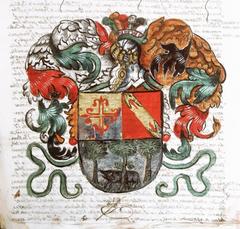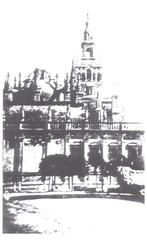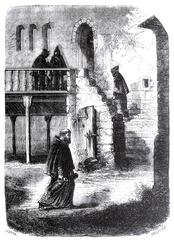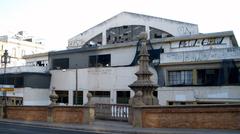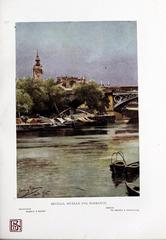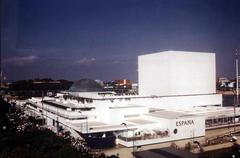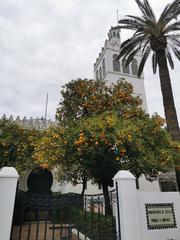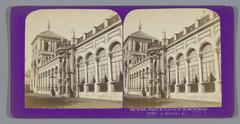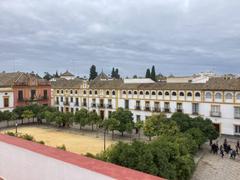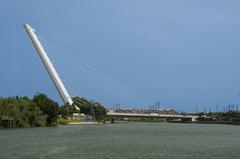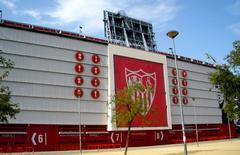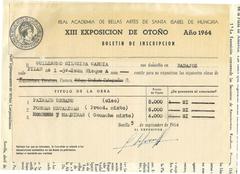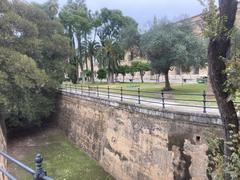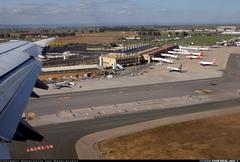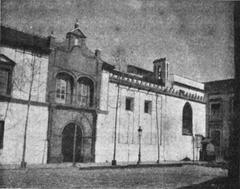Museum of Arts and Traditions of Sevilla: Visiting Hours, Tickets, and Travel Guide
Date: 04/07/2025
Introduction
The Museum of Arts and Traditions of Sevilla (Museo de Artes y Costumbres Populares de Sevilla) is an essential destination for anyone interested in the deep-rooted cultural and ethnographic heritage of Andalusia. Situated in the heart of María Luisa Park within the historic Mudéjar Pavilion, the museum provides a comprehensive journey through the region’s traditional crafts, daily life, and festive customs. This guide contains detailed information on visiting hours, ticketing, architectural highlights, key exhibits, and practical visitor tips to ensure you make the most of your experience at one of Seville’s most significant historical sites (Google Arts & Culture; Museumsexplorer; Visitasevilla.es).
Table of Contents
- Introduction
- Origins and Historical Development
- Visiting Hours and Tickets
- Architectural Significance: The Mudéjar Pavilion
- Collections and Exhibition Highlights
- Educational Initiatives and Visitor Services
- Practical Information and Travel Tips
- Frequently Asked Questions (FAQ)
- Summary and Visitor Tips
- Sources and Further Reading
Origins and Historical Development
The museum was established in 1972 and opened to the public in 1973 to document and promote the ethnographic and anthropological heritage of Andalusia. It is housed in the Mudéjar Pavilion, an architectural masterpiece designed in 1914 by Aníbal González for the 1929 Ibero-American Exposition. This building is a testament to the unique fusion of Islamic and Christian influences that characterize Andalusian identity (Museumsexplorer).
Visiting Hours and Tickets
- Opening Hours: Typically Tuesday to Sunday, 9:00 AM to 9:00 PM (seasonal variations may apply; always check the official museum website for current hours).
- Closed: Mondays and select holidays.
- Ticket Prices: General admission is around €1.50; free for EU nationals. Special exhibitions may have separate charges (andalucialovers.com).
- Booking: Tickets can be purchased at the entrance or online. Guided tours are available primarily in Spanish; enquire in advance for English options.
- Accessibility: The museum is fully wheelchair and stroller accessible, with ramps, elevators, and adapted restrooms.
Architectural Significance: The Mudéjar Pavilion
The Mudéjar Pavilion stands as a landmark of neo-Moorish architecture, with its elaborate brickwork, colorful azulejos (ceramic tiles), horseshoe arches, and stained glass. The building itself is an integral part of the museum experience, offering a stunning setting that reflects the multicultural legacy of Seville (Wikipedia; Lonely Planet).
Collections and Exhibition Highlights
The museum’s collections span over 6,000 artifacts, organized thematically to illustrate Andalusian daily life from the 18th to 20th centuries.
- Ceramics and Pottery: One of Europe’s most comprehensive collections, including historic pieces from Seville’s Triana district.
- Textiles and Embroidery: A remarkable array of mantillas, shawls, and traditional costumes representing regional artistry.
- Domestic Life: Reconstructed period rooms display authentic furnishings and kitchenware, providing insight into rural and urban traditions.
- Traditional Crafts and Trades: Tools and products from blacksmithing, carpentry, basket weaving, and leatherwork.
- Toys and Games: Antique toys and school materials reflecting Andalusian childhood.
- Festive Traditions: Artifacts and costumes from festivals such as Semana Santa and Feria de Abril, along with musical instruments and religious items.
- Glassware and Decorative Arts: Antique glass, clocks, and decorative household items.
Temporary exhibitions frequently explore specific aspects of Andalusian culture, including flamenco costumes, local market history, or the evolution of regional crafts.
Educational Initiatives and Visitor Services
- Guided Tours and Workshops: The museum offers guided tours and hands-on workshops on crafts like pottery and embroidery, suitable for all ages.
- School and University Collaborations: Educational programs include tailored materials for schools and research support for universities.
- Interpretive Materials: Multilingual signage and audio guides enhance the visitor experience.
- Digital Resources: Virtual tours and digital catalogs extend access to the museum’s collections (Museum Virtual Tour).
Practical Information and Travel Tips
- Location: Plaza de América, within María Luisa Park, Avenida de María Luisa, s/n, 41013 Sevilla, Spain.
- Public Transport: Bus lines C1, C2, 3, and 34 stop nearby.
- Facilities: Cloakroom, restrooms (adapted for accessibility), conference and audiovisual rooms, and a gift shop with books and crafts.
- Visit Duration: Allow 1–2 hours for a full tour.
- Nearby Attractions: Archaeological Museum of Seville, Plaza de España, and the Royal Pavilion are within easy walking distance (thesevilleguide.com).
- Photography: Non-flash photography is generally permitted; check with staff for any restrictions.
- Climate: The museum is air-conditioned, offering comfort during hot weather.
- Refreshments: No café inside, but several options are available in the park and nearby.
Frequently Asked Questions (FAQ)
Q: What are the current opening hours?
A: Typically Tuesday–Sunday, 9:00 AM–9:00 PM. Confirm seasonal hours on the official website.
Q: How much is admission?
A: Standard admission is €1.50; free for EU nationals.
Q: Is the museum accessible?
A: Yes, including ramps, elevators, and accessible restrooms.
Q: Are guided tours available in English?
A: Tours are mainly in Spanish; contact ahead to check for English-language options.
Q: Can I take photos?
A: Non-flash photography is generally allowed.
Q: What attractions are nearby?
A: Archaeological Museum of Seville, Plaza de España, María Luisa Park.
Summary and Visitor Tips
The Museum of Arts and Traditions of Sevilla is a cultural treasure, offering insight into Andalusian history, crafts, and festive traditions within an architectural gem. Its central location, affordable ticketing, and accessibility make it an excellent choice for families, scholars, and travelers alike. To maximize your visit, plan ahead using the museum’s online resources, consider combining your trip with nearby landmarks, and explore interactive digital content through resources like the Audiala app (official museum website; Visitasevilla.es; Museumsexplorer).
Sources and Further Reading
- Museum of Arts and Traditions of Sevilla: Visiting Hours, Tickets & Architectural Highlights, 2025, Google Arts & Culture (Google Arts & Culture)
- Museum of Arts and Traditions of Sevilla: Visiting Hours, Tickets & Architectural Highlights, 2025, Museumsexplorer (Museumsexplorer)
- Museum of Arts and Traditions of Sevilla Visitor Information, 2025, Visitasevilla.es (Visitasevilla.es)
- Museum of Arts and Traditions of Sevilla Visitor Guide, 2025, Intravel.net (Intravel.net)
